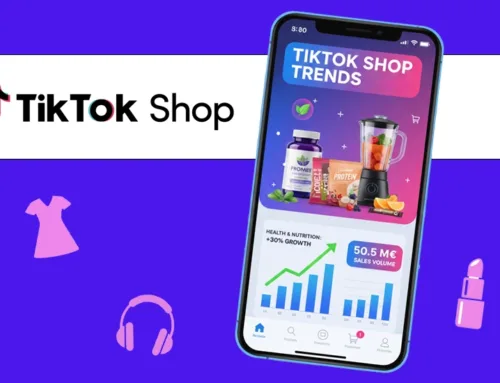Affiliation is a business model that makes it possible to manage performance-based campaigns, bringing together a wide range of publishers: price comparison sites, bargain sites, cashback merchants, etc., but not only: content creators are also important players in our customers’ affiliation programs. Today, affiliation enables content creators to monetize their activities without necessarily having to enter into a collaboration or partnership with a brand.
Many content creators sign up to affiliate platforms to choose the brands they wish to share with their community.
These influencers – bloggers, YouTubers, Instagrammers, Tiktokeurs, etc. – have an engaged audience and can be integrated into an affiliate strategy, just like traditional publishers, albeit with a few differences. But how can these partnerships be structured and managed within affiliate strategies to maximize their performance? Here’s a look at the best practices for managing content creators as genuine affiliate leverage.
Content creators and traditional affiliates: what they have in common
Although designers are often perceived as a separate channel, the way they work with brands replicates the mechanisms of affiliate marketing. They’re not just a visibility channel: they can be managed like affiliate publishers, with similar tools and business models.
So an influencer sharing an exclusive promo code or tracked link in his story acts as an affiliate publisher, generating traffic and sales for a brand.
Common tools used by designers and publishers
Tracked links: each creator can share a specific link that can be used to attribute sales generated.
Personalized promo codes: these codes, often exclusive to a designer, are shared with his or her community, making it possible to track the performance of each collaboration and also to earn commissions on the use of these codes.
Affiliation platforms: creators register on the platforms to choose the programs that interest them, just as traditional publishers do. In this way, advertisers have access to the same management tools for both types of program:
- Tracking, tools and reporting
- Remuneration of designers for sales generated
- Performance analysis and transparency in partnerships
- Access to a qualified network of designers and influencers
- Payment centralization
Performance-based remuneration
As with classic affiliation, creators are remunerated on the basis of the results they generate, via a CPA (Cost per Action/Sale) payment, which enables them to earn a commission on each sale made. More rarely, payment may be made on a CPL (Cost per Lead) basis, when the aim is to remunerate for registrations or quote requests generated, or on a CPC (Cost per Click) basis, when the aim is to remunerate creators on the basis of traffic generated. Some creators also charge a fixed fee, to ensure a guaranteed minimum income for the time spent creating media.
Content creators and affiliates: a key difference, the importance of brand experience
Why does a content creator need to experiment with the product and/or service?
Unlike a coupon site that relays offers without any direct interaction with the product, a designer needs to have a “physical” experience to be able to tell his community about it in an authentic way. They can’t just post a promotion: they have to test, give feedback and tell a story about the product or service they’re promoting. This approach is essential to maintain the trust of your audience and guarantee the impact of your recommendation.
All the more so as performance-based influence encourages content creators to become more involved in recommending a product, so that their communities take action. This further reinforces their need to really test products, and to talk about them in a personalized way.
The benefits of product endowments and vouchers
To enable designers to experience the brand before talking about it, it’s essential that they can hold it in their hands or experience the service. It’s important to understand that these endowments are not remuneration. They are a sine qua non of influencer campaigns, as they enable the creator to create authentic, relevant content. These endowments can take several forms:
- Products offered: fashion, beauty, high-tech, food, etc., the designer must test and integrate the product into their daily life before recommending it.
- Offered stays: for the tourism and hospitality sectors, a designer has to live the experience before promoting it.
- Vouchers: these allow designers to choose the products that best suit their tastes and editorial line.
How to integrate designers into an affiliation strategy?
Identifying the right profiles
Not all influencers are suited to a performance-based approach. You need to give preference to creators with a committed community (check the engagement rate), who have a natural affinity with the brand and who are open to how affiliation works. Middle and macro influencers (more than 30k subscribers) are often the best performers in terms of conversion, thanks to their large community, but don’t underestimate nano- and micro-influencers who, on their own scale, can also be good business drivers.
Offer to share the brand experience
As mentioned above, the first step in any affiliation campaign with designers is to share the brand experience with them.
A clear and attractive offer
To motivate a designer to promote a brand as an affiliate, you need to :
- Competitive commission rates, usually between 10 and 15%.
- High-performance tracking tools (tracked links, promo codes) to ensure that sales are tracked.
- Support to help maximize performance (content suggestions, SEO/Social Media advice)
- A simple, concise brief outlining the essential elements to be transcribed
Tracking and optimizing performance
Affiliation is based on a logic of continuous optimization. Similarly, for campaigns with creators, it’s all about :
- Analyze the sales generated by each influencer to determine the best-performing creators to continue working with
- Test different content formats (stories, videos, blog posts…) to find the right device
Affiliate managers must integrate content creators into their acquisition mix
For several years now, performance-based influence has been the natural evolution of affiliate marketing. More and more creators are joining affiliate platforms to monetize their content on a sustainable basis. This makes it easier for brands to integrate creators into their affiliate programs, alongside traditional publishers. As a result, influencer marketing and affiliate marketing are no longer two distinct universes, but a unified ecosystem where creators become true partners in performance. But for the collaboration to work, their need for brand experience must be taken into account, and the strategy adapted accordingly. Affiliate Managers, are you ready to integrate content creators into your affiliate programs?

3 questions to…
Julie Poissonnier,
Performance Manager, responsible for the Influence Effinity offer
“Our goal is to enable brands to activate the right creators with the right level of support.”
Can you describe Effinity’s Influence offer?
We have structured our approach to influence around three offers: “Autonomy”, “Performance” and “Made-to-measure”. Our aim is to enable brands to activate the right creators, with the right level of support, to increase the impact of their campaigns.
Each offer gives advertisers access to our network of creators and influencers, with the creation of an Influence program with a CPA ideally at 12%, as well as the referencing of their brand with our network, and the highlighting of their news, trends and sales events on the Effinity application.
All our offers also include essential tools for effective campaign management, such as transparent application management via a dedicated space, precise tracking thanks to tracking and campaign reporting, and partner invoicing and payment management.
The difference between our offers lies in the level of strategic support we provide. The “Performance” and “Custom” offers take things a step further, with sourcing, briefing and monthly activation of ambassador profiles (“Performance” offer), personalized communications to promote offers, new products and flagship products, and a management dashboard integrating analytics data to optimize the strategy. The management and follow-up of a customized campaign, according to personalized objectives, is possible with our “Customized” offer.
What rules must be respected in terms of remuneration for a successful performance-based influencer campaign?
To set up an effective performance-based influencer campaign, certain elements are essential. First, remuneration based on sales generated is mandatory. We recommend a CPA of 12% of sales excluding VAT for an initial test, bearing in mind that this remuneration generally fluctuates between 10 and 15% for this type of affiliate, positioned at the top of the conversion tunnel. We can then adjust this remuneration upwards, or include additional CPC remuneration for the best-performing influencers. We also recommend including a fixed fee for each piece of content distributed. On the one hand, this allows the brand to reuse the content, and on the other, it reinforces the involvement of the creators and ensures greater visibility for the campaign. A fixed fee is often mandatory for activating influencers with more than 20K subscribers.
Product endowment is also a key element?
Sending a product gift or voucher is also highly recommended – and even essential in our “Performance” and “Custom” offers. This enables influencers to create authentic content around products or services (photos, videos) with original staging, to offer real feedback to their community, and to activate profiles that are not yet brand customers. It’s also a way of limiting the fixed costs of a campaign while guaranteeing qualitative engagement. Finally, setting up a personalized promo code for each influencer is an effective lever for optimizing conversion with their audience.
Mis à jour le 30 April 2025
Mis à jour le 30 April 2025




